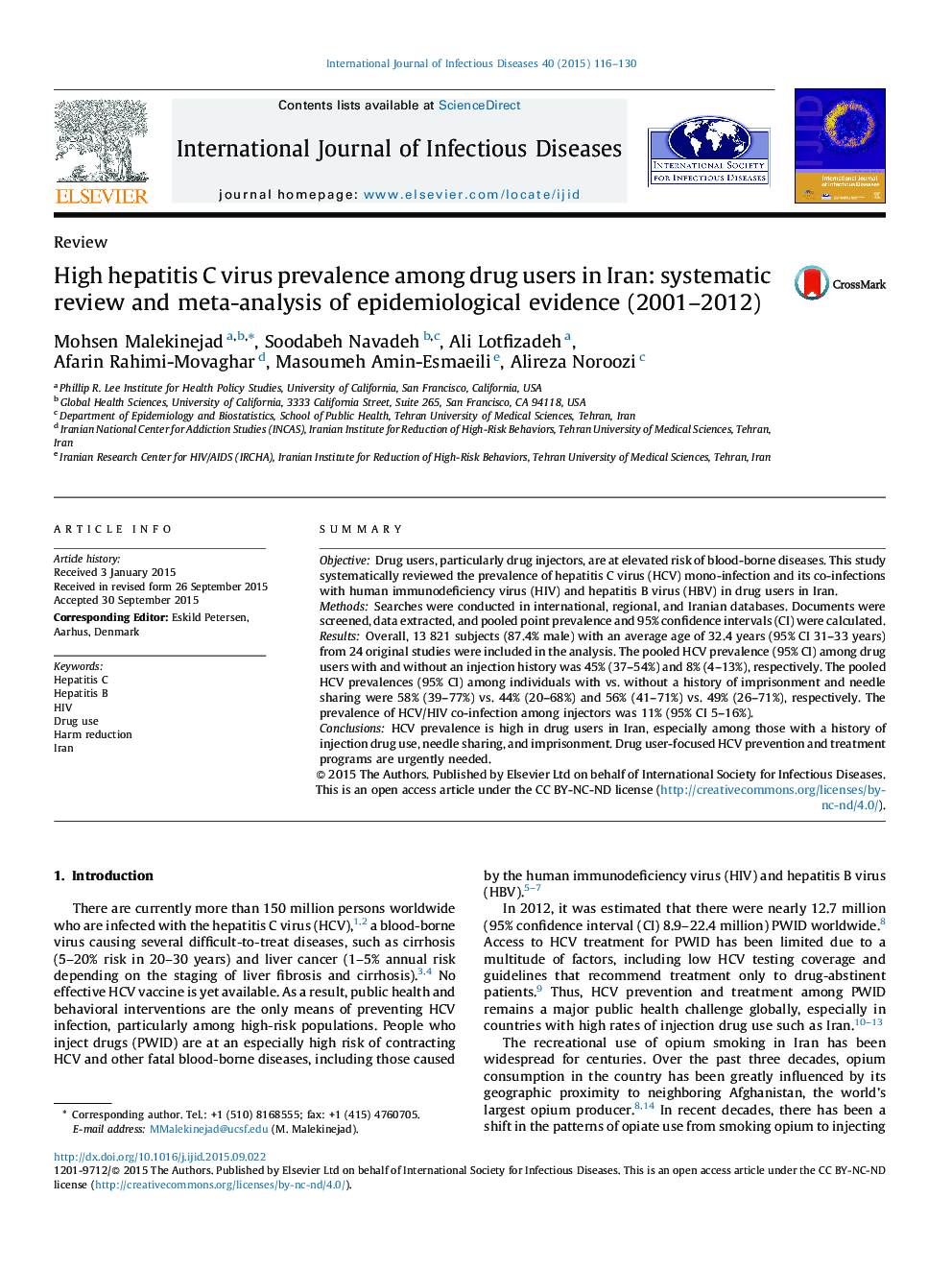| کد مقاله | کد نشریه | سال انتشار | مقاله انگلیسی | نسخه تمام متن |
|---|---|---|---|---|
| 3361956 | 1592055 | 2015 | 15 صفحه PDF | دانلود رایگان |

• The search yielded 24 original studies on HCV prevalence in drug users in Iran.
• Injection drug users had a higher HCV prevalence than non-injection drug users.
• The pooled HCV prevalences in recent and ever injectors were 53% and 40%, respectively.
• Approximately 11% of injection drug users with HCV had an HBV or HIV co-infection.
SummaryObjectiveDrug users, particularly drug injectors, are at elevated risk of blood-borne diseases. This study systematically reviewed the prevalence of hepatitis C virus (HCV) mono-infection and its co-infections with human immunodeficiency virus (HIV) and hepatitis B virus (HBV) in drug users in Iran.MethodsSearches were conducted in international, regional, and Iranian databases. Documents were screened, data extracted, and pooled point prevalence and 95% confidence intervals (CI) were calculated.ResultsOverall, 13 821 subjects (87.4% male) with an average age of 32.4 years (95% CI 31–33 years) from 24 original studies were included in the analysis. The pooled HCV prevalence (95% CI) among drug users with and without an injection history was 45% (37–54%) and 8% (4–13%), respectively. The pooled HCV prevalences (95% CI) among individuals with vs. without a history of imprisonment and needle sharing were 58% (39–77%) vs. 44% (20–68%) and 56% (41–71%) vs. 49% (26–71%), respectively. The prevalence of HCV/HIV co-infection among injectors was 11% (95% CI 5–16%).ConclusionsHCV prevalence is high in drug users in Iran, especially among those with a history of injection drug use, needle sharing, and imprisonment. Drug user-focused HCV prevention and treatment programs are urgently needed.
Journal: International Journal of Infectious Diseases - Volume 40, November 2015, Pages 116–130